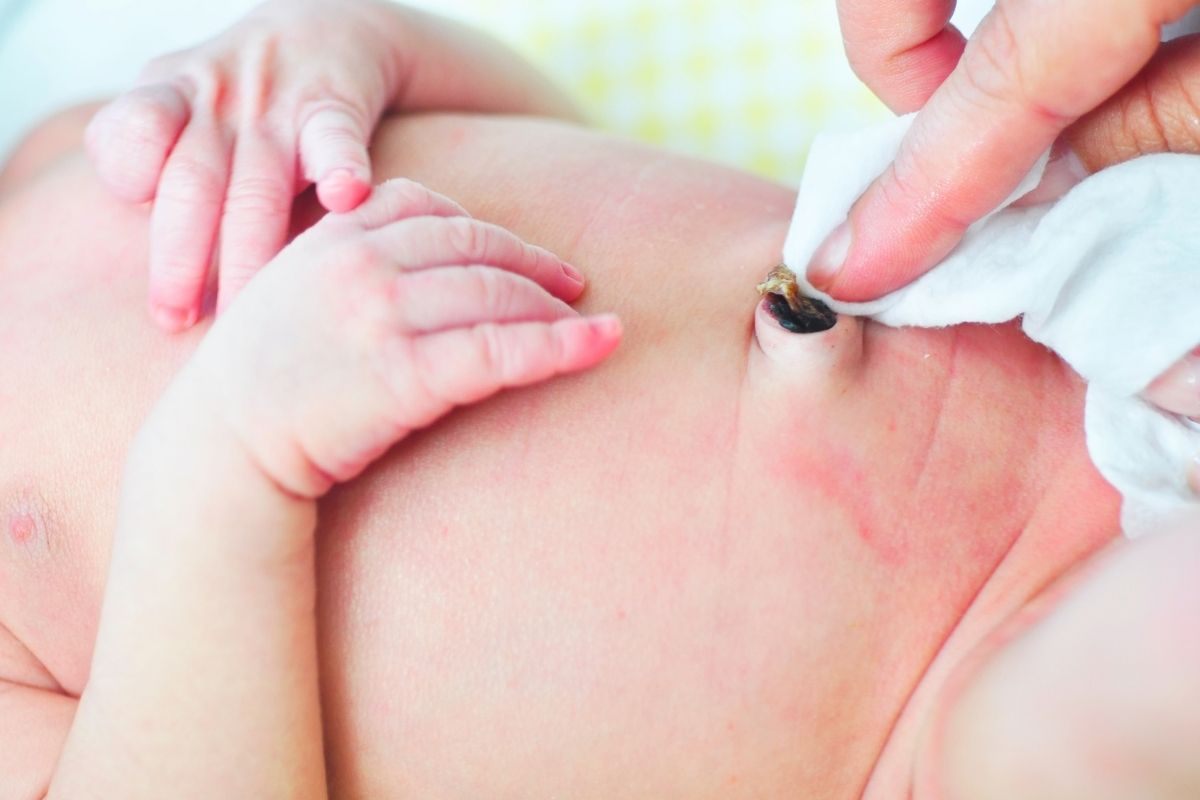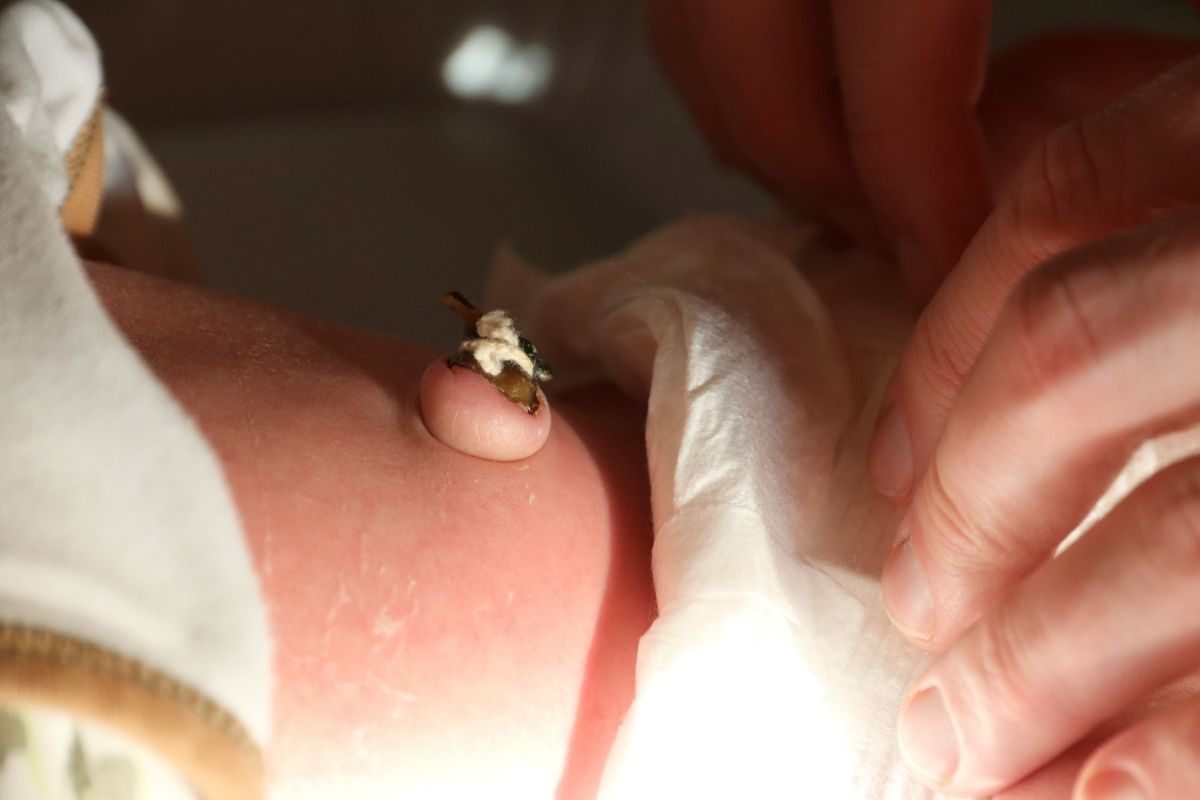Taking your newborn home is perhaps one of the best joys that life can offer. After all, this signals the start of your new life together and a chance to make memories, all while handling and taking care of your baby without extra help from your doctors and nurses.
One of the aspects you’ll have to deal with by yourself as new parents is learning how to clean and care for a newborn’s belly button. While this may just seem like a small part of your baby’s body and in your lives, this actually requires more attention than you think.
Knowing how to clean your baby’s belly button is critical in the first few weeks of their life. Get to know how to properly approach this delicate matter through this article. Below are some topics that we will tackle in this guide.
- What You Should Know About Your Baby’s Belly Button
- Keep Your Baby’s Belly Button Clean
- Bathing Your Baby While Their Stump Is Still Attached
- Complications of a Newborn’s Belly Button

What You Should Know About Your Baby’s Belly Button
By now, you might already know that the umbilical cord is responsible for bringing food and nutrients to your baby. This is connected to the placenta. Apart from the essential nutrients, it also carries oxygen and enriched blood with it.

When your baby is born, their umbilical cord will be cut as they no longer need to be connected to it. However, there will still be a portion left of this on your baby’s belly button, otherwise commonly called a stump. This stump will fall off by itself in around 5 to 21 days.
Although you may be tempted to remove the stump right away to see your child’s cute belly button, especially when it seems like it’s just hanging by a thread, doing so may cause a longer healing time. It can even cause unwanted scarring in your baby, something which you don’t want them to have.
The umbilical cord does not have any nerves. Because of this, it does not hurt your baby when the doctor cuts it off. However, seeing that it is still connected to your baby’s flesh, the stump itself could hurt when it is taken off or ripped off from the baby’s abdomen.
Prepare All the Necessary Equipment
Now that you know about the umbilical cord stump and how long it’s supposed to stay on your baby’s belly button, preparing the essential tools and equipment to start your cleaning journey is important. This way, you can clean up and take care of their belly button with ease.
Some of the basic tools you’ll need for the next couple of weeks is a sponge or a soft towel to help give baths to your child. During this time, all you have to do is give sponge baths until their cord naturally falls off. Alongside this, you will also need a large absorbent towel on which you can lay your baby.
Other items you will need include a bowl of water, clean clothes, diapers, as well as cotton swabs to get into the crevices and into the delicate surrounding areas. You can also use baby soap or a mild, gentle cleanser.
Keep Your Baby’s Belly Button Clean
The general rule in taking care of your newborn’s belly button and its umbilical cord stump is to keep it as clean and dry as possible. This should be observed just until the stump falls off without intervention. Allow it to air dry. Swabbing this with alcohol tends to kill the bacteria necessary to dry out the cord.

In the event that some of your baby’s urine or feces gets into their umbilical cord, take care not to wash it down. Instead, you can just use a cotton swab dipped into some mild soap and clean the surroundings and the insides of the cord until these are gone.
After cleaning it, make sure that you use a soft, absorbent washcloth to gently dry the stump and the area surrounding it. You can also use a Q-tip to dry it off or allow it to air dry to avoid friction which can remove the stump.
Though you may be tempted to put lotion or moisturizer after, as well as baby powder or oil, around your newborn’s umbilical cord, you should veer away from using this at all while the stump is still there. Not only can it add more moisture, but it can also lead your child to getting an infection.
Proper Care for the Belly Button While Using Diapers
We all know that your baby is likely using diapers until they have been potty-trained and even that can take years. Taking care of the stump can be quite difficult, particularly for first-time parents who don’t know how to deal with it.
One way you can keep the umbilical cord stump dry is by folding the front part of the diaper down. Not only does it keep moisture, poop, and urine away, but it also lessens friction or rubbing that can affect the stump.
Alternatively, you can use a diaper that is specifically designed to accommodate the umbilical cord with a cutout. There are now newborn diapers on the market that have a scoop design to stop the diaper from coming into contact with the stump.
Bathing Your Baby While Their Stump Is Still Attached
As previously mentioned, you should only turn to sponge baths until the umbilical cord stump falls off. This means you may have to put off submerging your newborn in a tub of water until the stump is no longer there.

Sticking to sponge baths in the meantime will help keep the cord dry. Therefore, it could also help hasten the process of the stump falling off on its own. Only when the stump has successfully detached could you go all and make bath time a fun time in the tub.
To give your baby a sponge bath with their stump still on, start by laying them on a clean absorbent bath towel. Then, using a sponge or an equally soft washcloth that’s dipped in water, wipe your baby in small and gentle motions. Make sure to go into the folds of the neck and armpits and clean out the formula and debris in the area.
Then, pat your baby dry or let them air dry. Avoid the belly button area while doing all of these things. Just clean the belly button with the corner of the washcloth or a Q-tip. Dress them in comfortable clothing that’s not too snug or too loose.
When to Give Your Newborn Baby a Sponge Bath
Your baby doesn’t have to take a bath every single day when they’re just a few weeks old. As a matter of fact, doctors even recommend that you give them a sponge bath just one to two times a week.
Keeping their baths to a minimum not only helps keep the umbilical cord clean and dry, but also ensures that your precious one’s skin remains plump and hydrated.
Complications of Having Your Newborn’s Belly Button Still On
The healing process may take some time, even after the stump falls off. At times, it’s normal to see some blood near the stump, similar to that of a scab. However, you might want to look out for some signs of irritation, or worse, infection.

Some of the signs you should keep your eyes peeled for include red and swollen skin around the area of the stump and on the abdomen, as well as pus forming in the area. These may already be signs of an infection and you should call your baby’s doctor right away.
Besides these, you might also want to look for fluid discharge, a foul smell, or even the formation of a small red bump called an umbilical granuloma. The latter is a type of scar tissue that can become infected.
Another complication that can develop before your newborn’s stump falls off is omphalitis, an infection that requires immediate care and attention. Although this is quite rare, this can still be life-threatening as this infection spreads to the baby’s abdominal wall and may bring with it other problems.
What to Do When the Umbilical Cord Has Already Fallen Off
Once your baby’s umbilical cord stump has finally fallen off on its own, you should still proceed with caution when it comes to cleaning and bathing your baby. After all, the navel will still be healing for days afterward.
Giving your child a sponge bath a few days after the stump has fallen off is something you should continue until the skin around the abdomen area is already nice and healed. After this period, you can already transition them towards taking baths in the tub.
Even as the belly button is healing, make sure to look through the area and clean away any secretions to prevent infection.
Final Thoughts
Keeping your newborn’s belly button clean is easier than you think. With this guide, you can keep infection at bay and help their navel develop nicely throughout their first weeks of life. If you happen to notice signs of infection, don’t hesitate to call your health care to provide help immediately.
References
umbilical granuloma – Umbilical Granulomas: Causes, Treatments, and Prevention







